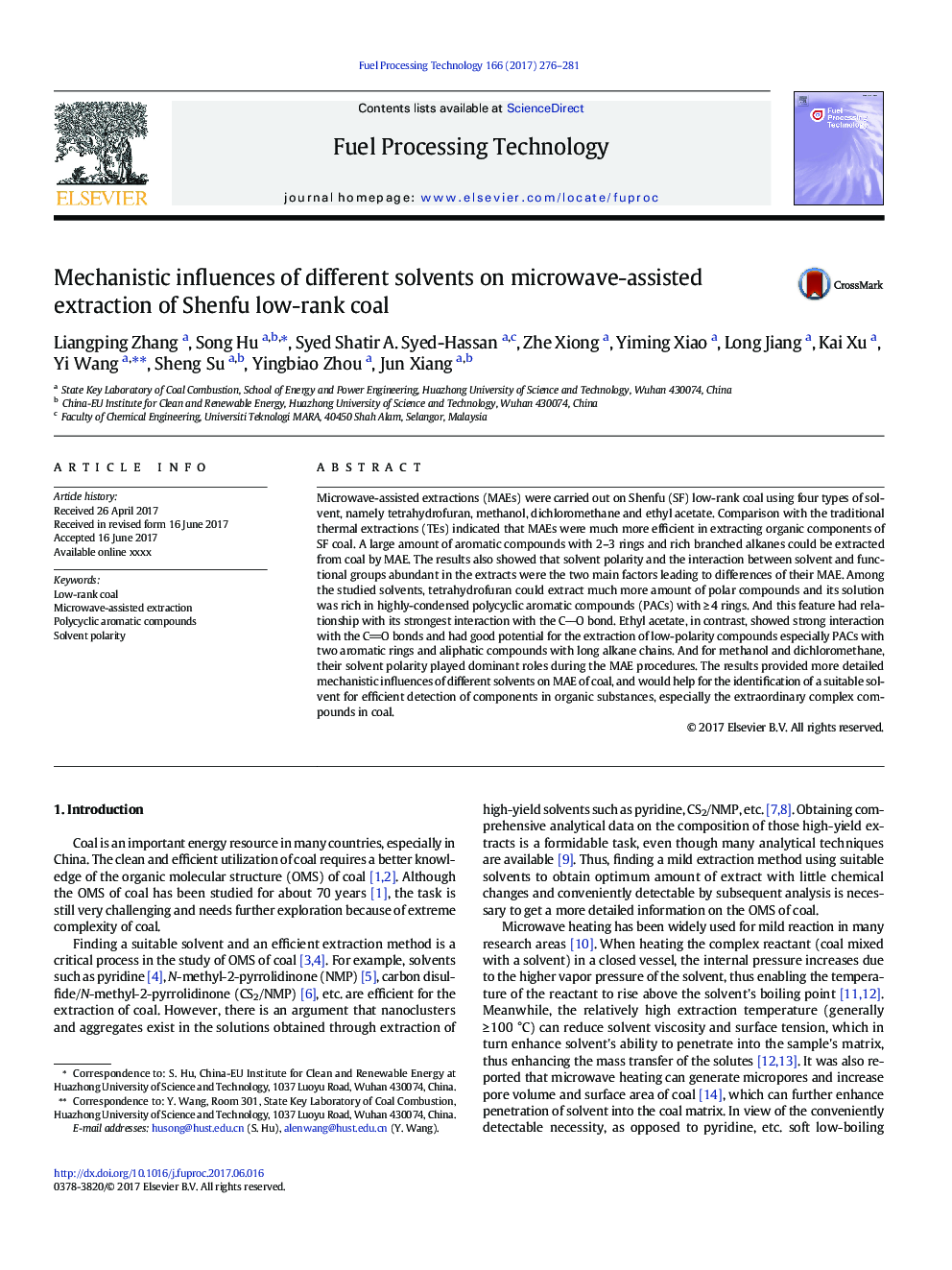| Article ID | Journal | Published Year | Pages | File Type |
|---|---|---|---|---|
| 4768874 | Fuel Processing Technology | 2017 | 6 Pages |
Abstract
Microwave-assisted extractions (MAEs) were carried out on Shenfu (SF) low-rank coal using four types of solvent, namely tetrahydrofuran, methanol, dichloromethane and ethyl acetate. Comparison with the traditional thermal extractions (TEs) indicated that MAEs were much more efficient in extracting organic components of SF coal. A large amount of aromatic compounds with 2-3 rings and rich branched alkanes could be extracted from coal by MAE. The results also showed that solvent polarity and the interaction between solvent and functional groups abundant in the extracts were the two main factors leading to differences of their MAE. Among the studied solvents, tetrahydrofuran could extract much more amount of polar compounds and its solution was rich in highly-condensed polycyclic aromatic compounds (PACs) with â¥Â 4 rings. And this feature had relationship with its strongest interaction with the CO bond. Ethyl acetate, in contrast, showed strong interaction with the CO bonds and had good potential for the extraction of low-polarity compounds especially PACs with two aromatic rings and aliphatic compounds with long alkane chains. And for methanol and dichloromethane, their solvent polarity played dominant roles during the MAE procedures. The results provided more detailed mechanistic influences of different solvents on MAE of coal, and would help for the identification of a suitable solvent for efficient detection of components in organic substances, especially the extraordinary complex compounds in coal.
Related Topics
Physical Sciences and Engineering
Chemical Engineering
Chemical Engineering (General)
Authors
Liangping Zhang, Song Hu, Syed Shatir A. Syed-Hassan, Zhe Xiong, Yiming Xiao, Long Jiang, Kai Xu, Yi Wang, Sheng Su, Yingbiao Zhou, Jun Xiang,
